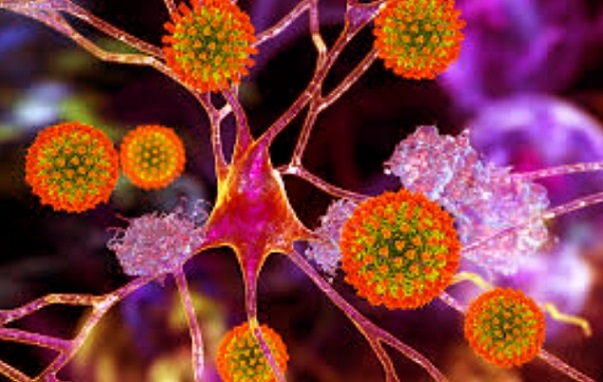Nikhil Prasad Fact checked by:Thailand Medical News Team Aug 03, 2025 5 months, 4 days, 1 hour, 38 minutes ago
Medical News: Scientists Uncover How COVID Spike Protein Directly Harms Brain Cells
A team of Italian researchers from the Federico II University of Naples and the Istituto Italiano di Tecnologia in Genoa has revealed how a specific part of the COVID-19 virus — the S1 subunit of the spike protein — can enter the brain and directly kill nerve cells. This groundbreaking discovery provides a clearer picture of how SARS-CoV-2 may be responsible for the wide range of neurological symptoms seen in many COVID-19 patients, including stroke, brain fog, and long-term cognitive issues.
 S1 Spike Protein of COVID-19 Virus Triggers Neuron Death
S1 Spike Protein of COVID-19 Virus Triggers Neuron Death
In this
Medical News report, the scientists discovered that the S1 portion of the spike protein, once inside the body, can cross into the brain and cause direct harm to nerve cells without the whole virus needing to be present. This action does not rely on the commonly known ACE2 receptor, but rather another receptor called Neuropilin-1 (NRP1), which pulls the protein into the neuron’s inner environment.
A Toxic Chain Reaction Inside Brain Cells
Using human neuron-like cells grown in the lab (SH-SY5Y cells), the researchers showed that the S1 protein alone reduced cell survival over time, while the S2 protein had no effect. The S1 protein triggered a chain reaction by boosting the levels of a molecule called HDAC4. This molecule, in turn, caused the breakdown of CREB — a key protein that protects neurons. Without CREB, the levels of another protein called RIPK1 shot up, which then led to a specific type of cell death called necroptosis.
Interestingly, the team found that blocking HDAC4 or RIPK1 could reduce the damage caused by the S1 protein. They also showed that giving cells extra CREB helped protect against the toxic effects. This toxic process seems to be entirely driven by S1’s entry into neurons via NRP1 — bypassing the more famous ACE2 route entirely.
Spike Protein Worsens Stroke-Like Brain Injuries
To explore further dangers, the scientists recreated conditions similar to a stroke in the lab. When they added the S1 spike protein to these stressed nerve cells, the damage became significantly worse. The S1 protein and the stroke conditions worked together to dramatically increase cell death and further disrupt the balance of HDAC4, CREB, and RIPK1 inside the neurons. This confirms fears that COVID-19 can amplify stroke severity and neurological damage.
These findings suggest that even without full viral infection, lingering spike proteins in the body may continue to harm the brain. This could explain why many people experience long-term neurological problems after recovering from COVID-19. The researchers identified a very specific biological pathway — the NRP1/HDAC4/CREB/RIPK1 axis — as the culprit. Blocking parts of this pathway might someday lead to treatments to prevent or reduce brain damage in COVID-19 patients and Long COVID sufferers.
The study findings were published in the peer reviewed journal: F
ASEB BioAdvances
https://faseb.onlinelibrary.wiley.com/doi/10.1096/fba.2025-00005
For the latest COVID-19 News, keep on logging to Thailand
Medical News.
Read Also:
https://www.thailandmedical.news/news/american-murine-study-finds-that-sars-cov-2-disrupts-brain-neuron-activity
https://www.thailandmedical.news/news/sars-cov-2-infects-ipsc-derived-neurons-and-causes-brain-degeneration-with-cathepsin-b-playing-a-crucial-role-in-viral-entry
https://www.thailandmedical.news/news/sars-cov-2-e-protein-triggers-neuron-cell-death-via-calcium-release
